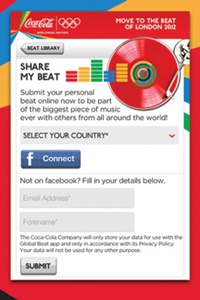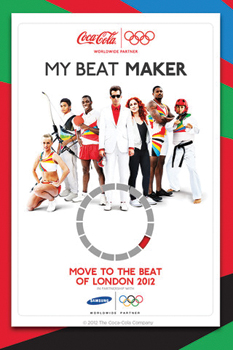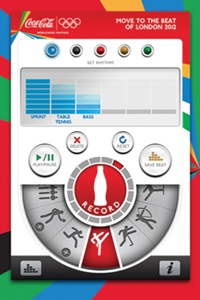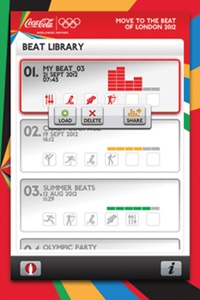Twenty-six sports. 205 countries. 10,500 elite athletes. 20,000 media and broadcasters. 7.6 million tickets. The numbers alone speak volumes about the potential impact the London Olympic Games will have on marketers seeking to leverage this unique global sports platform.
London 2012 promises to be the first true “social media games,” where fans will have unprecedented access and unlimited options to experience and share the event on their own terms. Social and digital media platforms have radically transformed the way we “watch” events like the Olympics, giving way to a hyperconnected digital experience that links fans (and marketers) across multiple screens and time zones.
Multiple screens mean multiple viewpoints when watching events like the Olympics. Everyone in the household — moms, dads, kids, family and friends — will have their own platforms to share their unique perspective. This not only creates a more personalized experience for fans, but it also demonstrates that the platforms a marketer chooses will shape the content they pull in and push out.
Given how social media and digital technologies are increasingly affecting the consumer experience, especially with global sports and entertainment properties, our agency, Taylor, designed and commissioned a survey of more than 1,000 U.S. consumers to fully understand how they will be viewing, sharing and interacting with the London 2012 Olympic Games. The study revealed the emergence of a new dynamic we call “Olympic Standard Time,” driven by the convergence of blurring time zones, positive consumer temperament and rapidly evolving technology.
Survey responses showed not only distinct usage patterns for social media during major sporting events like the Olympics, but they also revealed a unique dynamic between the types of content created and shared across these platforms with the times they are likely to be shared. This interplay gives rise to the idea and importance of OST and how it will become the new default time zone when watching and engaging with the Olympic Games.
OST demands instant, real-time gratification. Even with a five-hour (plus) time difference in the U.S., real-time access to content and conversations remains important to Olympic Games fans of all types. When it comes to accessing information and updates, OST is particularly important as fans look for information and updates on their favorite sports and athletes.
While people are reaching for a variety of devices and using multiple platforms and sites throughout the day to stay informed and connected, some time frames offer interesting opportunities to capitalize on OST. Prime time can be any time when content and conversation are creating trending topics and breaking social and digital media records. In traditional speak, the fringe day parts like early morning and late night can take on more importance.
Unprecedented access to information will create a dynamic where news travels fast, and people will look first to their social media platforms to stay informed. Given that platforms like Twitter often provide details and color commentary well in advance of traditional media channels (where there is often a 10- to 15-minute delay), consumers will know the results of the events before they are aired in prime time.
Many make peace with the spoiler alert, so expect a large contingency to shun knowing too much about the results so they can enjoy watching competition unfold (in “plausible real time”) on their screen of choice. Marketers understand this behavioral byproduct of OST and plan to activate in ways to help consumers create spoiler-free zones that provide some context for the events without revealing the full story and
results.
Taylor client Coca-Cola, an Olympic sponsor for more than eight decades, is leveraging OST with its largest digital campaign yet. At the center is the Move to the Beat: My Beat Maker app, with which users can join a global musical movement. The app provides users access to event highlights and Olympic athlete updates, and it also allows them to create their own music beat through the motion of their phone. In more than 50 countries, users can activate the app through QR codes in-store, texts at live events, and specialized Olympic Coke packaging leveraging augmented reality — which includes having images that when scanned by a smartphone or tablet using an application produce a video without the use of QR codes or radio frequency identification tags. The global nature of the My Beat Maker app allows users to interact
 |
Coca-Cola’s My Beat Maker app offers access to event highlights and athlete updates, while allowing users to create their own music.
|
across time zones and international borders with individuals who share the positive sentiment around the Games.
As is the case with most sporting events, the Olympic athletes will become the point people for coveted, behind-the-scenes access on the events and related activities. However, we can also expect other personalities and celebrities, whether they’re on the ground in London or following the action elsewhere in the world, to be involved in the Olympic social media conversation.
Social media influencers will become more important around this time, as those with substantial followings will be able to create and direct content and conversation around the Olympic Games. These social media influencers, as well as spokespeople for Olympic marketing partners, have the opportunity to amplify their reach outside of the traditional category conversation by participating in meaningful commentary that speaks to their personal pride and love for the events and athletes. Activating a content strategy for their athlete spokespeople will enable Olympic marketers to remain relevant and topical — and develop a unique voice to targeted demos — during the weeks dominated by the activities in London.
Marketers must recognize that they must dial up their game to compete in this new global marketplace driven by 24-hour access and the expectation of co-created content. Leveraging OST and understanding the dynamics of the multiscreen social experience will help marketers amplify their efforts and budgets as they activate against global events like the Olympic Games.
Katina Scott is senior vice president/brand planning director at public relations agency Taylor, which has supported leading consumer brands at every Olympic Games since 1984.








